
“I want to jump on the Gold IRA bandwagon but am struggling with how much I’d need in gold to properly hedge my other investments. What would you say is a minimum or maximum? What other factors will eat into my investment?”
 Bullion.Directory’s Ask Ally Service
Bullion.Directory’s Ask Ally Service
By Alison Macdonald
Commercial Editor at Bullion.Directory
Frank in Atlanta is looking to diversify his investments with gold and like many Americans he’s drawn to the tax-advantaged nature of IRAs. But how much gold makes a proper hedge? And how much would he need to buy to make a meaningful difference?
It’s not escaped our reader’s notice that Gold IRAs are back in fashion with American investors following a lull the past few years.
At its core, a Gold IRA is just a regular self-directed Individual Retirement Account that happens to allow for the inclusion of physical gold, alongside other precious metals, as part of the investor’s retirement portfolio.
This type of IRA is appealing for several reasons.
Firstly, gold’s enduring value and its reputation as a hedge against inflation and market volatility make it an attractive option for those seeking stability in their retirement savings. Gold has historically maintained its worth over time, providing a sense of security that is hard to match with more traditional, and sometimes more volatile, investment options.
It’s also got a history of going up when stocks and other paper assets go down – hence it’s use as a risk hedge.
De-risking is one of the key benefits of diversifying retirement investments. By including gold in their IRA, investors can spread risk more evenly, which is especially appealing in times of economic uncertainty.
Like now.
The allure of gold, the baked-in tax advantages combined with the flexibility of a self-directed IRA, offers a compelling investment choice for those looking to balance their portfolio with a tangible asset that has stood the test of time.
Before I look at adding gold in any quantity that could produce proper hedging results, I would first have to ask – does Frank already have a retirement account or would he be starting from scratch?
His answer will dramatically effect how much use gold in a tax-advantaged IRA could have for him, versus gold outside.
Option 1: Starting a Gold IRA with Existing Retirement Accounts
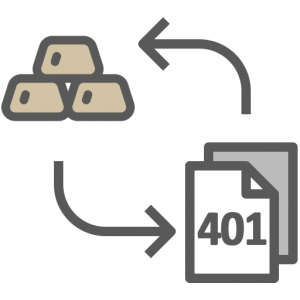 For investors with existing retirement accounts, such as IRAs or 401(k)s, starting a Gold IRA often involves a rollover or transfer process.
For investors with existing retirement accounts, such as IRAs or 401(k)s, starting a Gold IRA often involves a rollover or transfer process.
This process allows you to transfer a part or all of your current retirement funds into a Gold IRA without incurring immediate tax penalties. this is required because not all IRAs allow or enable the holding of physical metals.
The Rollover Process
- First, you’ll need to choose a Gold IRA specialist, to work with, or deal directly with a Gold IRA custodian . This specialist or custodian will specialize in precious metals and be equipped to handle the specific nuances of a Gold IRA.
- Once you’ve selected a custodian, you’ll initiate the rollover. This can be done as a direct rollover, where funds are transferred directly from your existing account to the Gold IRA, or an indirect rollover, where you receive a check for your funds and then deposit them into your Gold IRA within 60 days.
It’s crucial to adhere to IRS guidelines during this process to avoid taxes or penalties. Working with a trusted gold IRA dealer will make the process significantly easier and ensure it is fully compliant.
Determining the Amount of Gold
 With your gold IRA set up, it’s time to fund it in preparation to by gold. But how much?
With your gold IRA set up, it’s time to fund it in preparation to by gold. But how much?
- The decision on how much gold to include in your new Gold IRA is not a one-size-fits-all situation. It depends largely on individual financial goals, risk tolerance, and your overall investment strategy. Do you hold lots of high-risk stocks that could be badly effected in a financial crash? More gold may be required than if your investments weren’t tied so much to financial markets.
- Consider your long-term retirement plan and current portfolio composition. A diverse portfolio that balances gold with other assets can reduce risk and increase the potential for growth.
- Consult with a financial advisor to determine the appropriate percentage of gold that aligns with your investment objectives and retirement goals. They can provide insights based on market trends, your financial situation, your current portfolio risks and all within the context of your retirement horizon.
Rolling over existing retirement funds into a Gold IRA is a strategic way to diversify your retirement portfolio and can be a smooth process with the right planning and guidance. It’s the easiest way of getting the percentage of gold or other precious metals you wish, right, directly where your other assets are held.
This allows for the most freedom, but remember the amount of gold to include should be carefully considered, keeping in mind your broader financial strategy and the unique benefits that gold brings to your investment portfolio.
Top Rated Gold IRA Companies:
Option 2: Starting a Gold IRA from Scratch
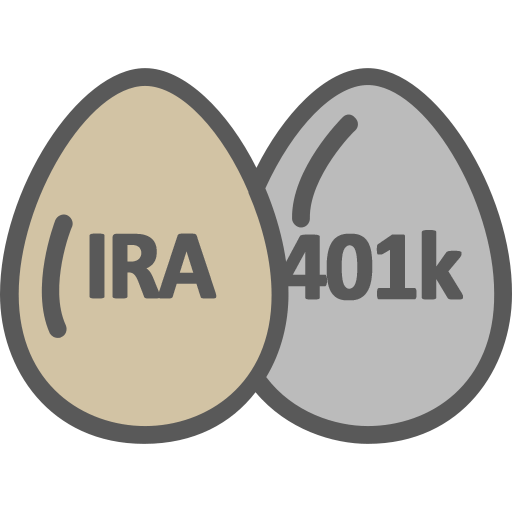 For investors without an existing retirement account, initiating a Gold IRA requires a few foundational steps, combined with an understanding of IRS guidelines and contribution limits.
For investors without an existing retirement account, initiating a Gold IRA requires a few foundational steps, combined with an understanding of IRS guidelines and contribution limits.
These contribution limits will inevitably limit how much gold you can buy at once, and because IRS annual contribution limits are relatively low – it will be unlikely that the gold you would buy could have ANY major hedging or diversification benefit over the first few years.
Either way, the process is as follows:
- 1. Choosing a Custodian: As with a rollover, start by selecting a provider/ custodian specialized in Gold IRAs. This entity will help administer the IRA and ensure compliance with IRS regulations.
- 2. Opening the Account: Complete the necessary paperwork to open your Gold IRA. This typically includes providing personal information and agreeing to the custodian’s terms and fees.
- 3. Funding the Account: Fund your Gold IRA through a cash contribution. This can be done via bank transfer, check, or other means as allowed by the custodian.
The IRS sets annual contribution limits for IRAs, including Gold IRAs. For 2024, the limit is $6,000, or $7,000 for those aged 50 and above.
These limits are important to consider, as they dictate the maximum amount you can contribute in a given year. Exceeding these limits can result in penalties.
Starting a Gold IRA from scratch offers a fresh opportunity for investors to build their retirement savings with the stability and potential growth of gold. However, it’s essential to adhere to IRS guidelines and consider the custodian’s fees and services to make the most of this investment avenue.
Be aware that $7,000 or $14,000 of gold is unlikely to have any major effect on your overall portfolio, no matter what the world throws at you – but at least you’ve made a start – and this is important.
Also be aware that when it comes to starting a Gold IRA, another critical aspect to consider is the minimum investment amount required by Gold IRA companies.
These minimums can vary significantly from one company to another and can play a pivotal role in shaping your investment strategy. For a new IRA with IRS-constrained maximum annual contributions, if your maximum is BELOW a dealer’s minimum… it’s not a great start!
Typical Minimum Investment Amounts
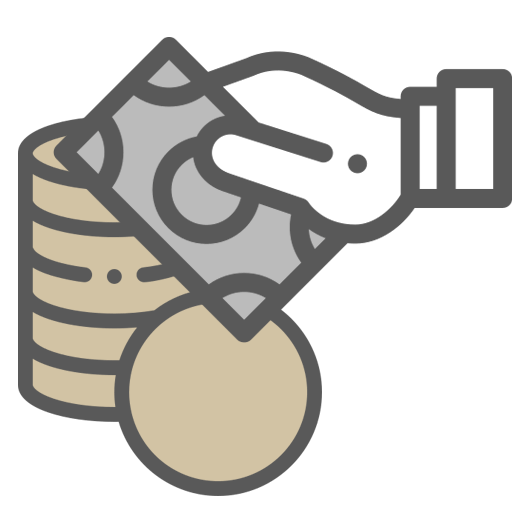 Specialist Gold IRA companies typically set minimum investment amounts for opening a new account. These can range anywhere from $5,000 to $50,000, with most companies setting their minimums in the $10,000 to $25,000 range.
Specialist Gold IRA companies typically set minimum investment amounts for opening a new account. These can range anywhere from $5,000 to $50,000, with most companies setting their minimums in the $10,000 to $25,000 range.
If you’re holding a new IRA with a maximum $7,000 in year 1, it will be hard to make these minimums meaning you will probably need to buy through a regular retail bullion dealer – and have them ship the metals direct to your IRA.
In all cases, it’s important for investors to check these minimums as they shop around for the right company.
Some firms may offer lower minimums to attract a broader range of clients, while others may target higher net-worth individuals with higher minimums.
The minimum investment amount can directly influence how much gold an investor can include in their IRA.
For someone with a limited amount of capital, a company with a lower minimum investment requirement may be more appealing.
For investors looking to make a substantial commitment to gold, companies with higher minimums might offer more advanced services or better buyback terms, which can be advantageous for larger investments.
Larger-scale buys often fully cover other initial costs such as set-up fees, storage fees, and come with lower dealer markups / premium.
Diversification and Portfolio Balance
 Integrating gold into your retirement portfolio is a strategic move that centers around the principle of diversification. Balancing gold investments with other assets is key to creating a well-rounded and resilient retirement portfolio.
Integrating gold into your retirement portfolio is a strategic move that centers around the principle of diversification. Balancing gold investments with other assets is key to creating a well-rounded and resilient retirement portfolio.
Gold often moves independently to or with an inverse/counter relationship to other financial assets like stocks and bonds.
This characteristic makes it a valuable tool for diversification, helping to reduce overall portfolio risk.
In times of economic uncertainty or inflation, gold can act as a hedge, preserving the value of your savings when other assets might be declining.
Determining Appropriate Gold Allocation
The right allocation of gold in your portfolio depends largely on your individual risk tolerance and investment goals.
- A common guideline is allocating 5-10% of your portfolio to gold, but this can vary – some consultants and wealth advisors recommend 20%, even 30% and more.
- For those closer to retirement or seeking more stability, a higher allocation to gold might be appropriate.
- Conversely, those with a longer investment horizon or a higher risk tolerance might opt for a lower percentage.
In all cases it’s important to periodically review and adjust your gold allocation in response to changes in market conditions and your personal financial situation.
A Balanced Approach
A balanced portfolio includes a mix of assets – equities, bonds, and precious metals like gold – each serving different roles.
While equities might offer growth, gold offers stability and protection. Regularly reviewing and rebalancing your portfolio ensures that your asset allocation stays in line with your goals and risk tolerance.
Costs and Fees Associated with Gold IRAs
When setting up and maintaining a Gold IRA, investors should be aware of various fees that can impact the overall cost and initial investment amount.
Understanding these fees is crucial for effective financial planning and maximizing the potential of your Gold IRA. Making small investments will carry a far greater burden of fees as a percentage of investment, compared to buying at scale – meaning you’ll need the market to rise farther to make a profit.
Small buys also tend to carry higher overall premiums due to being priced ‘retail.’
In fact, some of the best gold IRA companies charge zero fees or have very low fixed fees regardless of the amount invested – and typically sell gold at the wholesale prices their larger economy of scale allows.
Setup Fees
Most Gold IRA companies charge a setup fee for opening a new account. This fee can range from a modest amount to several hundred dollars, depending on the provider. Some will waive this fee for new customers.
Annual Maintenance Fees
In addition to setup fees, annual maintenance fees are common. These cover the administrative costs of managing your IRA and can vary based on the complexity of your account and the services provided. Again these may be waived in certain circumstances, if minimum buy levels are met.
Storage Fees
Gold IRAs require physical storage of the precious metals in an IRS-approved depository. Storage fees are typically charged annually and will either be fixed or variable depeningd on the amount and type of metals stored. These fees are essential for the secure and compliant storage of your gold assets – however like all the other fees listed above may be waived for a certain number of years if minimum investment levels are met.
Dealer Markups
When purchasing gold for your IRA, you’ll encounter dealer markups – because at the end of the day a gold dealer is a commercial entity, with expenses, staff costs and other overheads – and they need to make a profit to stay in business.
This markup/premium varies based on the type of gold (coins, bars, etc.) and market conditions – and will vary enormously depending on the scale of your investment. Wholesale deals typically start to trigger over $50,000.
While some markups are reasonable, it’s important to compare prices among different dealers to ensure you’re getting a fair deal.
No matter what, a dealer will tend to charge a far lower markup than any other retail business, sometimes as low as 0.5% – meaning they need volume to cover their costs and make a profit.
Impact on Initial Investment
These fees can add up – impacting the initial investment amount needed for a Gold IRA.
For instance, if you have a specific amount to invest, a portion of that will go towards these fees rather than the actual purchase of gold.
It’s important to factor in these costs when calculating how much gold you can buy initially. Sometimes, this might mean needing to invest more to meet the minimum gold purchase requirements after deducting all fees.
Conclusion: Tailoring Your Investment to Your Needs
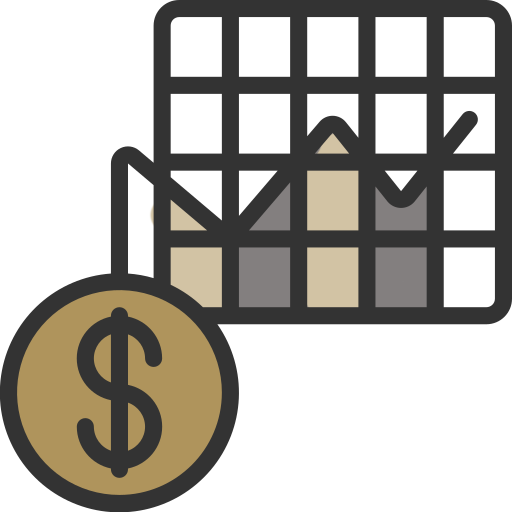 Determining the start-up capital for a Gold IRA is a decision that should be tailored to your unique financial situation and retirement goals.
Determining the start-up capital for a Gold IRA is a decision that should be tailored to your unique financial situation and retirement goals.
Key considerations include understanding the minimum investment requirements set by Gold IRA companies, the impact of various fees such as setup, storage, and dealer markups, and the importance of portfolio diversification.
Balance your gold investments with other assets in your retirement portfolio. The percentage of gold should align with your risk tolerance, investment horizon, and overall retirement strategy.
Tailor your investment in a Gold IRA according to your financial capacity. This means not overextending yourself to meet minimum investment thresholds if it doesn’t align with your broader financial plan.
A Gold IRA can be a valuable component of a diversified retirement portfolio. However, it’s crucial to approach this investment thoughtfully, considering both the costs involved and how it fits into your overall retirement planning.
Top Rated Gold IRA Companies:
Alison Macdonald

Ask Ally, is your direct line to gold investment wisdom. Alison “Ally” Macdonald, with her extensive experience and sharp tongue, cuts through clutter to offer honest, insider takes on your gold investment questions.
Need insights or industry secrets? Ally’s ready to deliver, combining professional expertise with a smattering of Glasgow patter. Get ready for straightforward, expert guidance from a one-time gold shill turned good guy. Ask Ally Today






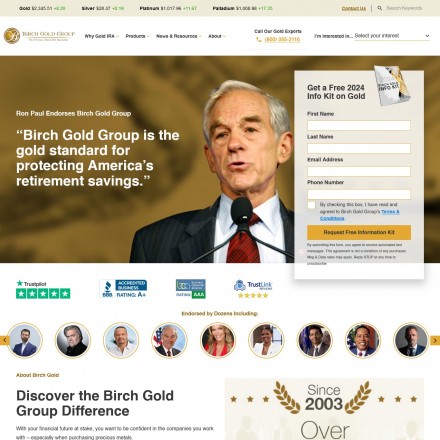









 Material provided on the Bullion.Directory website is strictly for informational purposes only. The content is developed from sources believed to be providing accurate information. No information on this website is intended as investment, tax or legal advice and must not be relied upon as such. Please consult legal or tax professionals for specific information regarding your individual situation. Precious metals carry risk and investors requiring advice should always consult a properly qualified advisor. Bullion.Directory, it's staff or affiliates do not accept any liability for loss, damages, or loss of profit resulting from readers investment decisions.
Material provided on the Bullion.Directory website is strictly for informational purposes only. The content is developed from sources believed to be providing accurate information. No information on this website is intended as investment, tax or legal advice and must not be relied upon as such. Please consult legal or tax professionals for specific information regarding your individual situation. Precious metals carry risk and investors requiring advice should always consult a properly qualified advisor. Bullion.Directory, it's staff or affiliates do not accept any liability for loss, damages, or loss of profit resulting from readers investment decisions.

Leave a Reply